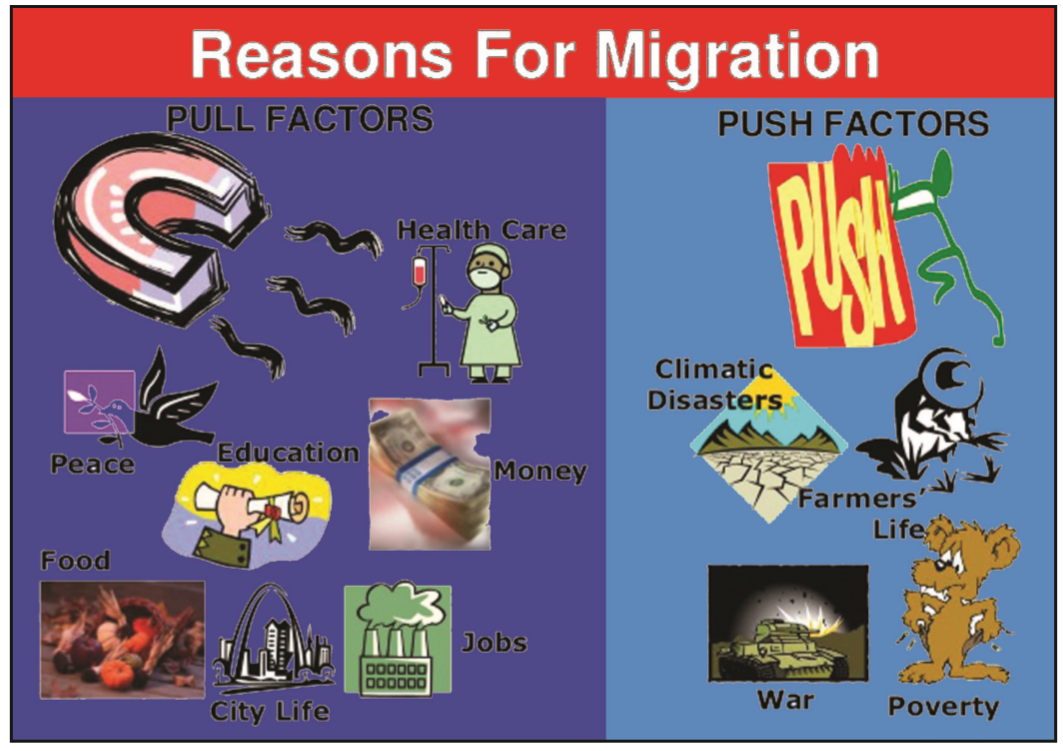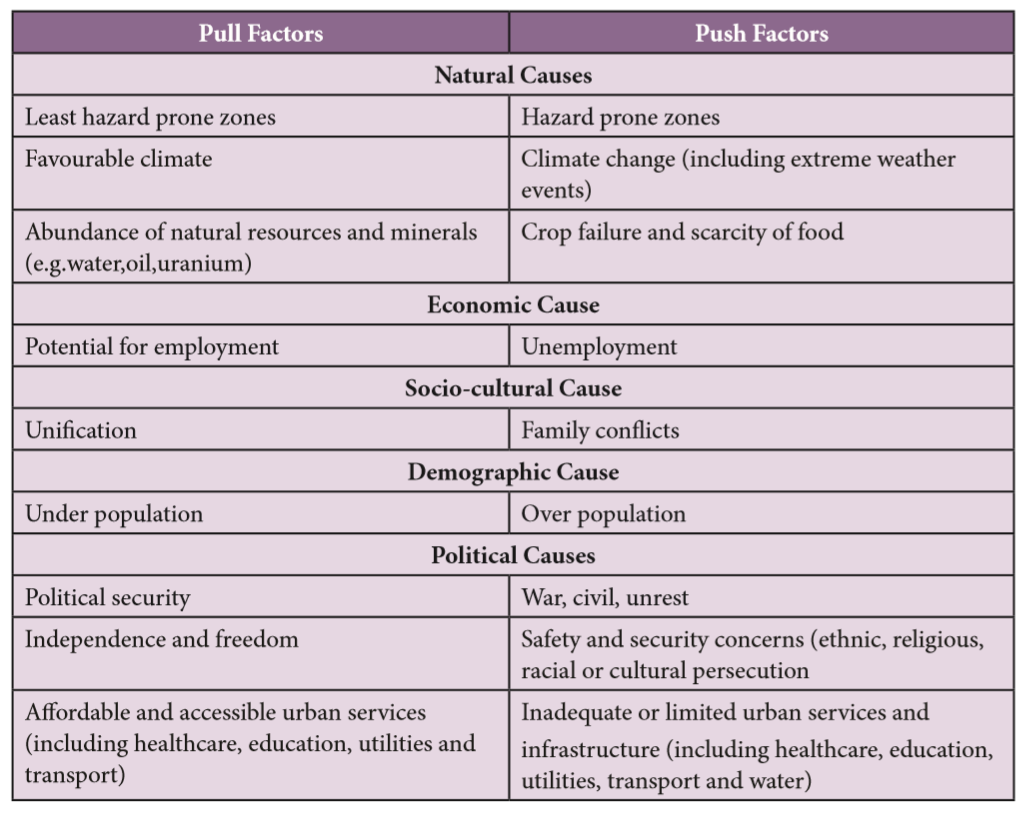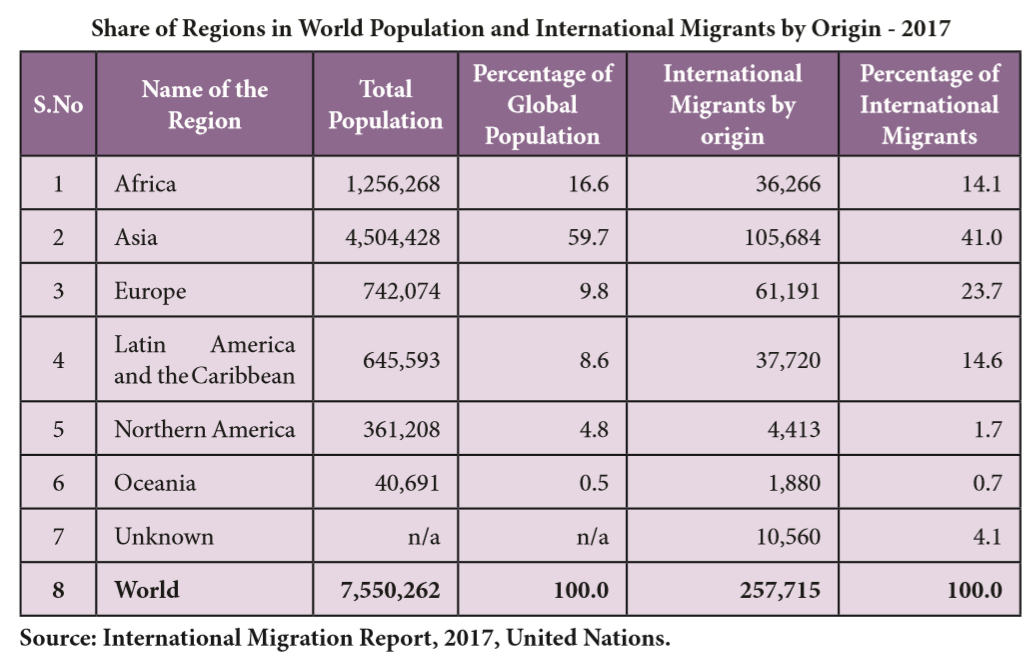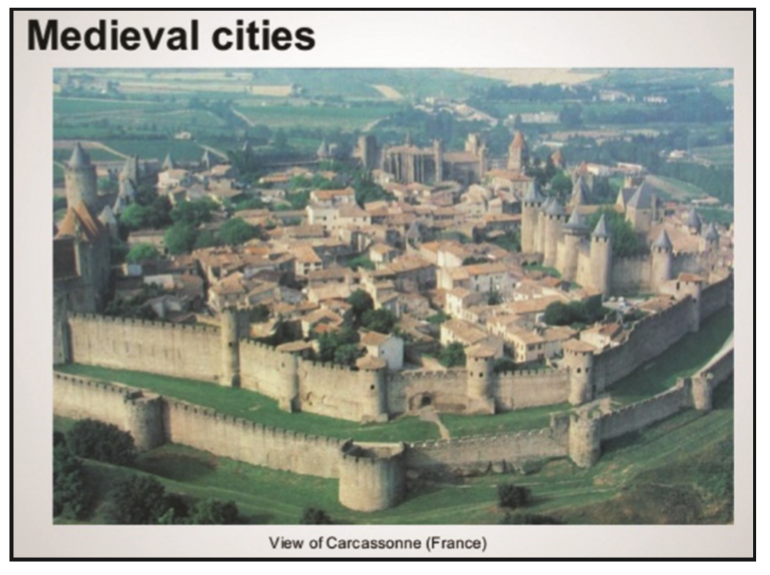Migration and Urbanisation Notes 8th Social Science
Migration and Urbanisation Notes 8th Social Science
8th Social Science Lesson 13 Notes in English
13. Migration and Urbanisation
Migration
- Migration has been defined differently by different experts.
- In general, migration is defined as the permanent or semi permanent change of residence of an individual or group of people over a significant distance.
- So, the term migration refers to the movement of people from one place to another.
United Nations Organization Definition:
- Migration is a form of geographical mobility of population between a geographical unit to another, generally involving a permanent change of residence.
- One of the most important aspects of social science is “Human Migration”.
- It has maintained a close relation with mankind from its earliest stage. Migration is one of the most important dynamic human activities from the very beginning of human life.
- During the early days, people moved from one place to another in search of food.
- When most of the people ceased to live in forest and adopted civilized life, they developed relationship with domesticated animals and fertile land.

Factors of Migration
- There are a number of factors which are responsible for the migration of human population.
- These factors can be grouped under the heads of favourable and unfavourable factors.
- The favourable factors which attract people towards a location are called pull factors.
- The unfavourable factors which make the people to move out from a location are called push factors.
The various causes which are responsible for human migration is categorized under five groups as follows.
8th Social Book Back Questions
Ecological or Natural Causes of Migration
- The causes operate under this category are natural ones. They include volcanic eruption, earthquake mankind changed considerably.
- They almost left the nomadic life and started to live in permanent settlements.
- At this stage, people continued to move from one region to another in search of fertile land for cultivation.
- Afterwards, the nature of mobility frequently changed over a period of time. Earthquake, flood, drought etc.
- These events force the people to leave their native places and settle in the new areas.
- The conditions like the availability of water resources, areas free from hazards, pollution etc., attract the migrants.
Economic causes of Migration
- Economy is one of the most important causes of human migration from one area to another. Various economic causes determine the level and direction of migration.
- The availability of fertile agricultural land, employment opportunities, development of technology etc., are some of the economic causes that attract the migration.
- The mass poverty and unemployment force the people to move out from their native places to the places where the better employment opportunities are available.
Socio-cultural causes of Migration
- Socio-cultural causes also play some roles in the process of migration.
- Migration of women after marriage and migration associated with pilgrimage are based on the socio-cultural customs.
Demographic causes of Migration
- In demographic sense, the population composition like age and sex, over population and under population are the major causes of migration.
- It is well known fact that adults are more migratory than any other age-groups.
- Women mostly migrate after their marriage. Generally over population is considered as a push factor and under population to be pull factor in the context of migration.
Political causes of Migration
- Various political causes like colonization, wars, government policies etc. have always been playing important role in human migration from time to time.
- Wars have been one of the significant causes of migration since ancient time.

Types of Migration
Migration can be classified in several ways. It is usually categorized as follows

Based on the movement associated with administrative limits
Internal migration:
- The movement of people within a country is known as internal migration.
- Further, the internal migration is classified into four categories on the basis of the place of origin and destination of migrants.
- Rural to Urban Migration is the movement of population from rural areas to growing towns and cities mainly in search of employment, education and recreation facilities.
- Urban to Urban Migration is the migration between one urban centre to the other like in search of higher salaries.
- Rural to Rural Migration is driven by fertile land for cultivation and other sociological factors like Marriage etc.
- Urban to Rural Migration is the movement from urban centres to rural areas to get rid-off the urban problems and returning to native places after retirement from jobs.
- Rural to urban migration is the most common one.
International migration
Migration that occurs across the national boundaries are known as international migration.
Based on the willingness of the migrants for migration
Voluntary migration:
If the migration takes place on person’s free will, initiative and desire to live in a better place and to improve their financial status, the migration is said to be voluntary.
Involuntary or forced migration:
If the migration takes place against the will of migrants, the migration is termed as involuntary migration. The push factors like war may force the people to emigrate from a place are of this type.
Based on the duration of stay of migrants in the place of destination
Short term migration:
In this kind of migration, the migrants stay outside only for a short duration before returning to the place of origin. The duration may be from a few days to few months.
Long term migration:
It is a kind of migration in which the migrants stay outside at least for a few years.
Seasonal migration:
- In this type of migration usually a group of people migrates from their native places during a particular season and returns after end of that season.
- People migrating to hill stations during summer and the migration of agricultural workers during sowing seasons belong to this category.
- Transhumance is an another example of seasonal migration.
Consequences of Migration
Migration affects both the areas of origin of migration and the areas of destination. The following are the major consequences of migration.
Demographic consequences:
- It changes age and sex composition of population.
- Migration of females after their marriage leads to decline in sex ratio in the source regions and increase the sex ratio in the regions of destinations.
- The migration of male workers in search of jobs decreases the independent population of the source regions which increases the dependency ratio.
Social consequences:
- The migration of people from different regions towards an urban area leads to the formation of plural society.
- It helps the people to come out of narrow mindedness and people become generous.
Economic consequences:
- The migration of more people from over populated to under populated regions results the imbalance of the resource-population ratio.
- In some cases, the regions of over and under population may become the regions of optimum population.
- Migration may influence the occupational structure of the population of an area.
- Through this it will certainly affect the economy of the regions also. Brain drain is a consequence of migration.
- Brain drain refers to the migration in which skilled people from economically backward countries move to developed countries in search of better opportunities.
- Eventually, this leads to backwardness in source regions. This is called as “backwash effect”.
Environmental consequences:
- Large scale movement of people from rural to urban areas causes overcrowding in cities and puts heavy pressure on resources. It leads to rapid growth of cities.
- The over population in urban areas leads to the pollution of air, water and soil.
- Scarcity of drinking water, lack of space for housing, traffic congestions and poor drainage are the common environmental problems prevail in urban areas.
- The lack of space for housing and the rising of land cost lead to the formation of slums.
Urbanisation
Urbanisation refers to the process in which there is an increase in the proportion of population living in towns and cities.
Causes of Urbanisation
- Urbanisation is driven by three factors: natural population growth, rural to urban migration and the reclassification of rural areas into urban areas.
- Present day urbanisation includes changes in demographics, land cover, economic processes and characteristics of geographic area.
Origin and Growth of World Urbanisation
The process of urbanisation in the world has a long history.
Ancient Period:
- The urban centres started developing during the pre-historic period (before 10000 years).
- During this period primitive man started domestication of plants and animals. It was the period of development of permanent settlements.
- The river valley regions of the Egypt, Greece and India gave rise to agrarian communities which eventually formed the urban communities and urban centres.
- The excess production of food grains was the major reason for urbanisation.
- Ur and Babylon in Mesopotamia, Thebes and Alexandria in Egypt, Athens in Greece, Harappa and Mohenjodaro in India were noted prehistoric cities of the world.
- In ancient period the increase in the number and size of urban centres occurred during the two great colonizing periods of the Greeks and Romans.
- During the beginning of the 7th century itself many cities were found near the Aegean Sea.
- During the Greek colonizing period, the expansion of trade promoted the growth of towns and cities.
Medieval Period:

- It refers to the period after the 11th century. During this period, the European countries, increased their overseas trade which played an important role in the revival of European towns and cities after a period of low development.
- At the end of the thirteenth century, Paris, London, Geneva, Milan and Venice were the important cities found in Europe.
Modern Period:
- This period starts from 17th century. It marks the third phase of development in urbanisation.
- The industrial revolution in the 19th century accelerated the growth of towns and cities.
- The Europeans with urban civilization gave birth to a large number of new towns in North America and Soviet Union.
- The modern means of transport and communication, the development of new trade routes during 19th century had strengthened the trade centres and urban areas.
- The latest development in urbanisation was noticed in the continent of Africa.
- Before 1930, Africa had towns only on its coasts but now it has 50 towns with population exceeding 1,00,000.
- Major cities in Africa are Cairo, Nairobi, Mombasa, Bulawayo, Duala, Abidian, Logos, Accra, Addis Abba, Leopoldville, Luanda, Cape Town, Natal, Pretoria etc.
- Thus, in modern age, the accelerating urbanisation is resulting in a redistribution of population throughout the world.
Consequences of Urbanisation
Housing and Slums:
- There is a lack of space for housing and a marked reduction in the quality of housing in the urban areas due to increase in population.
- This problem may increase in the years to come. Rapid rate of urbanisation results the development of slums.
Over Crowding:
Over-crowding leads to unhealthy environment in the urban areas. It also the cause of many diseases and riots.
Water supply, Drainage and Sanitation:
No city has round the clock water supply in the world. Drainage situation is equally bad. The removal of garbage is a Himalayan task for urban local bodies.
Transportation and Traffic:
- Absence of planned and adequate arrangements for traffic and transport is another problem in urban centres.
- The increasing number of two wheelers and cars make the traffic problem worse. They cause air pollution as well.
Pollution:
- Towns and cities are the major polluters of environment. Several cities discharge their entire sewage and industrial effluents untreated into the nearby rivers.
- Industries in and around the urban centres pollute the atmosphere with smoke and toxic gases.
More to Know:
1. In 1950, 30% of the world’s population was urban, and by 2050, 68 % of the world’s population is projected to be urban (World Urbanisation Prospects, 2018, Key facts).
2. In 2007, for the first time in history, the global urban population exceeded the global rural population and the world population has remained predominantly urban thereafter. (World Urbanisation Prospects, 2014 Revision, Highlights).
3. India, China and Nigeria – together are expected to account for 35 % of the growth in the world’s urban population between 2018 and 2050. India is projected to add 416 million urban dwellers, China 255 million and Nigeria 189 million (World Urbanisation Prospects, 2018, Key facts).
4. The number of international migrants worldwide has continued to grow rapidly in recent years, reaching 258 million in 2017, up from 220 million in 2010 and 173 million in 2000 (International Migration Report, 2017).
5. Female migrants outnumber male migrants in Europe, Northern America, Oceania and Latin America and the Caribbean, while in Africa and Asia, particularly Western Asia, migrants are predominantly men. (International Migration Report, 2017).
6. In 2017, India was the largest country of origin of international migrants (17 million), followed by Mexico (13 million) (International Migration Report, 2017).